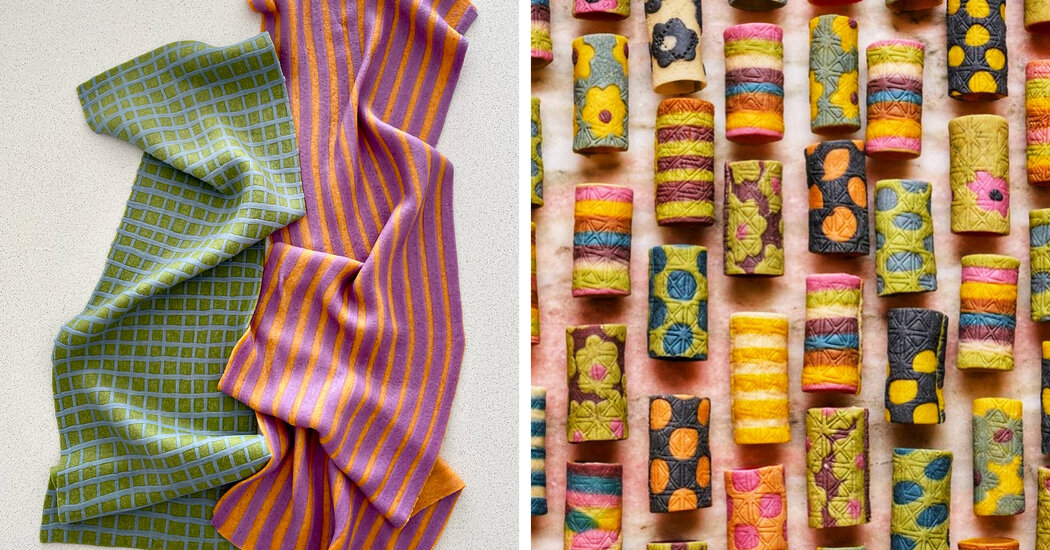Artisanal Noodles in Acid-Trip Colors
David Rivillo’s rainbow ravioli is equal parts art and science. The 45-year-old Venezuelan, who’s now based in Porto Alegre, Brazil, started making colorful patterned pasta in 2019 in homage to his favorite artist, Carlos Cruz-Diez, a Venezuelan known for his chromatic relief murals who died that year at the age of 95. Putting his Ph.D. in chemistry to good use, Rivillo experimented with natural dyes (such as spirulina and paprika) to find those that would maintain their hue even when dried or cooked and posted his work on Instagram. Now, Rivillo, who recently left his job as a nanotechnology researcher to pursue the project full time, sells his creations (from $40 for 2.1 ounces, plus shipping). And he isn’t the only noodle maker playing with psychedelic designs. The Sydney, Australia-based artist Jennifer Tran, 39, makes candy-striped rigatoni and checkerboard tortellini, as well as floral-print pasta sheets that look more like textiles than food. And in California, Fiona Afshar, 57, takes visual inspiration from her local farmers’ market and from her Malibu garden, adorning paccheri with yellow and purple blooms and ravioli with tiny images of lemons and limes. Employing highly pigmented ingredients like beet powder, activated charcoal and harissa, she sells multivariety gift boxes (from $95) through her website. The only problem with these Technicolor carbs? They’re almost too pretty to eat. Says Rivillo of his pasta: “People take a long time to get the courage to cook it.” @david_rivillo; @_papetal_; fionaspasta.com. — Ella Riley-Adams
The Thing: An Illuminated Totemic Sculpture From Klove Studio
Designers increasingly celebrate Indigenous forms but often confine themselves to a single cultural inspiration. Prateek Jain and Gautam Seth, a couple in their 40s who founded Klove Studio 17 years ago in New Delhi, take a very different approach. Their Totems Over Time are created to gently illuminate not merely a room but the ways in which so many primordial civilizations employed surprisingly complementary motifs, no matter how geographically or historically distant from one another they might have been. Each of the gigantic symmetrical sculptures, made of blown glass, metals and stones including onyx, is a mind-bending tour — from classical Rome and aboriginal India to Aztec and Native American lands. In Totem of Beauty, which is nearly 10 feet tall, jade-dipped laurels give way to a third eye, a…
Click Here to Read the Full Original Article at NYT > Travel…
